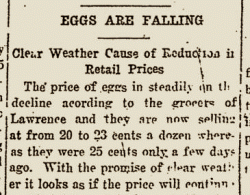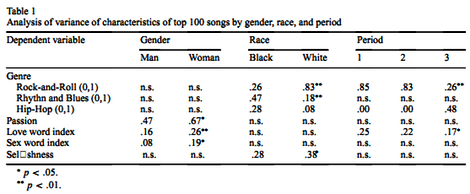Marc Abrahams's Blog, page 595
February 18, 2012
Improbable Research @ AAAS in Vancouver Saturday
Please join us TONIGHT, Saturday night, February 18, at 7:00 pm for the annual Improbable Research show at the AAAS annual meeting. Details:
AAAS Annual Meeting, Vancouver, British Columbia, Canada. Fairmont Waterfront Hotel, Mackenzie Room. [Read Pete McMartin's preview in the Vancouver Sun.] Featuring:
Marc Abrahams, Improbable Research editor and founder of the Ig Nobel Prize ceremony
John Senders of the University of Toronto, 2011 Ig Nobel public safety prize winner for his driving-on-a-highway-with-eyes-covered experiment. [Note: Professor Senders is ill, and could not travel to Vancouver; a distinguished surrogate will deliver the talk on his behalf]
Ivan Oransky , co-founder of Retraction Watch , will describe the year's most memorable and provocative retractions
Sidney Fels of the University of British Columbia will demonstrate how computers can automatically turn a person's gestures into speech or song [Note: Professor Fels will also do a more formal presentation, the next morning, for AAAS conference attendees.]
and others to be announced.
This event, unlike most of the AAAS Annual Meeting, is open free to the public. #AAASmtg
BONUS: Complete schedule of upcoming Improbable events

February 17, 2012
When eggs were falling
"EGGS ARE FALLING", says an ambiguously worded headline in the March 12, 1910 issue of the Lawrence Daily World.

Jamaican patois paper
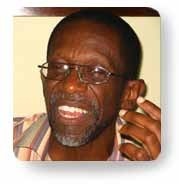 Hubert Devonish, who is Professor of Linguistics at the University of the West Indies, Mona, Kingston, Jamaica, is one of the very, very few researchers to have published a scholarly paper written entirely in Jamaican Patois.
Hubert Devonish, who is Professor of Linguistics at the University of the West Indies, Mona, Kingston, Jamaica, is one of the very, very few researchers to have published a scholarly paper written entirely in Jamaican Patois.
An example paragraph :
"In plentii konchrii, di piipl-dem no taakin di seem langgwij an no fiil se dem iz seem neeshan. So, dem wa in chaaj a di setop in di konchrii doz chrai mek di piipl-dem get fiilinz fo neeshan."
For clarity. the author also provides an accompaniment in standard English, the above being translated as :
"In many countries, the populations do not speak the same language and, therefore, do not feel they belong in the same nation. In these circumstances, those who run the state apparatus often try to create a shared national consciousness."
Di hool ting caan bi red year. 'Ruuts langgwij, nyuu taim sapii an fiilinz fo neeshan'
It was presented at the 10th Biennial Conference, Society for Caribbean Linguistics, 24-27 August, 1994, Guyana, S.A. and also reprinted in Kyk Magazine # 48, April 1998, pp. 136-152.
BONUS: For those unfamiliar with the sound of Jamaican speech, see this 2010 interview with Horsemouth Wallace.

February 16, 2012
That man Kaprekar and his damned number
Yutaka Nishiyama writes about a man and his curious number:
The number 6174 is a really mysterious number. At first glance, it might not seem so obvious. But as we are about to see, anyone who can subtract can uncover the mystery that makes 6174 so special.
In 1949 the mathematician D. R. Kaprekar from Devlali, India, devised a process now known as Kaprekar's operation. First choose a four digit number where the digits are not all the same (that is not 1111, 2222,…). Then rearrange the digits to get the largest and smallest numbers these digits can make. Finally, subtract the smallest number from the largest to get a new number, and carry on repeating the operation for each new number.
It is a simple operation, but Kaprekar discovered it led to a surprising result….
(Thanks to investigator Adiya Uman for bringing this to our attention.)

Dieter Hochuli joins LFHCfS
Dieter Hochuli has joined the Luxuriant Flowing Hair Club for Scientists (LFHCfS). He says:
I head the insect ecology research group at the University of Sydney. Our work focuses on functional roles these animals play in nature and their use in the assessment and restoration of degraded ecosystems – which basically means I spend my time watching insects and spiders do stuff in the name of solving our great environmental crises. I started growing my hair as a joke for a school reunion and decided to keep it when I found out that it annoyed my balding and greying colleagues. As you can see, it's also a handy tool for enhancing teaching evaluations.
Dieter Hochuli, Ph.D., LFHCfS
Associate Professor
School of Biological Sciences
University of Sydney
Sydney, Australia
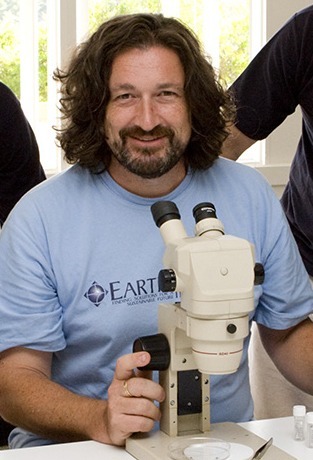


February 15, 2012
A line of people each trace a line
An experiment by Clement Valla, who drew a line and then had 500 people each attempt, sequentially, to trace the line they saw:
Villa did a similar experiment with a circle:

To Predict Home-Based Shopping Trips, Fuzzily
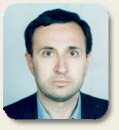 Of all the fuzzy intervening opportunity models, this one is most explicitly designed to predict home-based shopping trips:
Of all the fuzzy intervening opportunity models, this one is most explicitly designed to predict home-based shopping trips:
"A fuzzy intervening opportunity model to predict home-based shopping trips." Shahriar Afandizadeh [pictured here], Seyed Mehdi Yadi Hamedani, Canadian Journal of Civil Engineering, 2012, 39:(2), 203-222, The authors are at the School of Civil Engineering, Iran University of Science and Technology.
(Thanks to investigator Tom Gill for bringing this to our attention.)

February 14, 2012
The development of the square egg
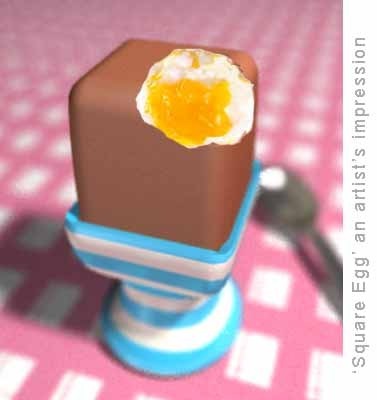 Through millions of years of evolution, the shape of an egg has evolved to an optimum – at least from a hen's point of view.
Through millions of years of evolution, the shape of an egg has evolved to an optimum – at least from a hen's point of view.
For some humans though, this shape is less than ideal – there are those who prefer instead the aesthetic appeal of a cuboid rather than ovoid.
For technical (and ethical) reasons, this shape modification must necessarily be performed after laying rather than before. Prompting inventor Masashi Nakagawa to devise his 'Apparatus for deforming boiled egg' – for which he received a US patent (4,092,093) in May 1978.
"The boiled egg which has been deformed according to the present invention has a unique cubic shape, so that such an egg can be widely utilized in cuisine. It should be noted especially that the yolk is deformed in substantially the same manner as the white, i.e. in conformity with the external deformed shape of the boiled egg. Thus, there can be obtained a new, interesting boiled egg which is different from the conventional shape of a boiled egg."
BONUS See this video of an 'Egg Cuber' in action. Which is said to be made by the Aluminium Housewares Company (Hong Kong) in 1977 – and may, or may not, have been be based around Mr. Nakagawa's patent.

Observational research: Penguins, proposal, London Zoo
A filmed marriage proposal in the London Zoo, witnessed by penguins and filmy-eyed tele-observers:
[HT Ian Sample]

February 13, 2012
Love-words have been disappearing from love songs
Words about love are, or at least were, disappearing from love songs. This University of Colorado study quantified the phenomenon:
"Expressions of love, sex, and hurt in popular songs: A content analysis of all-time greatest hits," Richard L. Dukes [pictured here], Tara M. Bisel, Karoline N. Borega, Eligio A. Lobato, Matthew D. Owens, The Social Science Journal, 40 (2003) 643–650. The authors explain:
This research analyzed the 100 most popular songs (1958–1998) for artist characteristics and expression of love. In the 1990s women and black artists recorded more hits than in earlier periods. Over time, references to love in lyrics performed by women artists decreased. References to sex in lyrics peaked during 1976–1984 when women used sexual references five times more than men; however, during 1991–1998, men used more sexual references. Later songs and songs performed by white, female artists expressed greater selfishness. The quality of love expressed in lyrics remained the same….
The study includes a section dedicated to selfishness:
3.4. Selfishness
We coded the lyrics into two categories of selfishness: love on your terms or love on our terms (coded 0), and love on my terms (coded 1). We analyzed selfishness by variables of gender, race, and period. The proportion of lyrics that were selfish increased over time (.25 in 1958–1972; .33 in 1976–1984, and .37 in 1991–1998), but the differences were not statistically significant. Thirty-three percent of songs performed by man and 33% of songs performed by women showed selfishness (not significant).
Lyrics performed by black artists were selfish in 28% of the songs, and lyrics performed by white artists were selfish in 38% of the songs. This difference was statistically significant [F(1, 98) = 4.26; p < .05; see Table 1]. Furthermore, the dummy variables of black and woman interacted statistically [F(1, 98) = 4.02; p < .05; not shown on Table 1]. The lowest selfishness score was obtained for black women (19%), and the highest selfishness score was obtained for white women (48%).
(Thanks to investigator Jim Cowdery for bringing this to our attention).

Marc Abrahams's Blog
- Marc Abrahams's profile
- 14 followers




